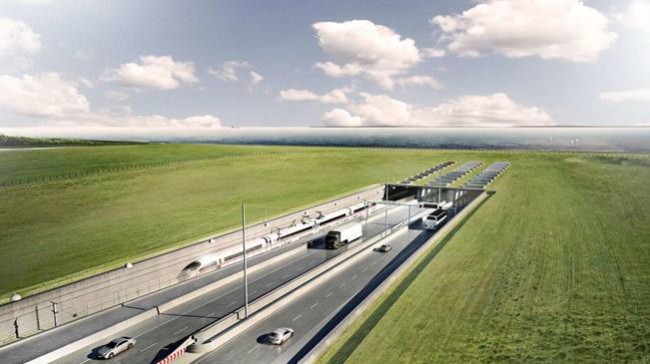World’s longest undersea
A massive engineering project is underway to revolutionize Europe’s transportation system. The Fehmarnbelt Tunnel, which is being built under the sea, will connect Denmark and Germany. When completed, it will be the world’s longest road and rail tunnel and the longest submerged tunnel. Khabar Express Tribune. The 18-kilometer (11.2-mile) tunnel will carry two roadways and two electric railway lines. While tunnels are traditionally built by digging through hard ground, the Fehmarnbelt Tunnel is being built using prefabricated concrete sections. The massive sections will be floated to the seabed, joined together, and then sunk. Each section is 217 meters long, 42 meters wide, and 9 meters deep. Each section weighs about 73,000 tons, which is the same as 10 Eiffel Towers.
The first prefabricated concrete section was completed in a factory in Rodbyhavn, Denmark, in February, marking a major milestone for the project. The construction of the tunnel portals at Rodbyhavn and Puttgarden is also progressing. The project is scheduled to be completed by 2029.
The 7.4 billion euro ($7.7 billion) tunnel will not only increase transport efficiency, but will also play a significant role in the tourism sector. It will provide more convenient access for visitors to the Scandinavian region.
World’s longest undersea
The ferry currently takes 45 minutes between Denmark and Germany. Once the tunnel is open, the distance will be covered in just 10 minutes by car and 7 minutes by train. The current travel time between Hamburg and Copenhagen will be halved, which will revolutionize passenger and freight transport.
Mads Schreiner, International Market Director at VisitDenmark, believes that the tunnel will encourage self-drive tourism, weekend breaks and environmentally friendly travel such as cycling and train tourism.
Those involved say the Fehmarnbelt Tunnel will not only be an engineering marvel, but will also serve as a vital link in the European transport infrastructure, radically changing the movement of people and goods across the continent.





